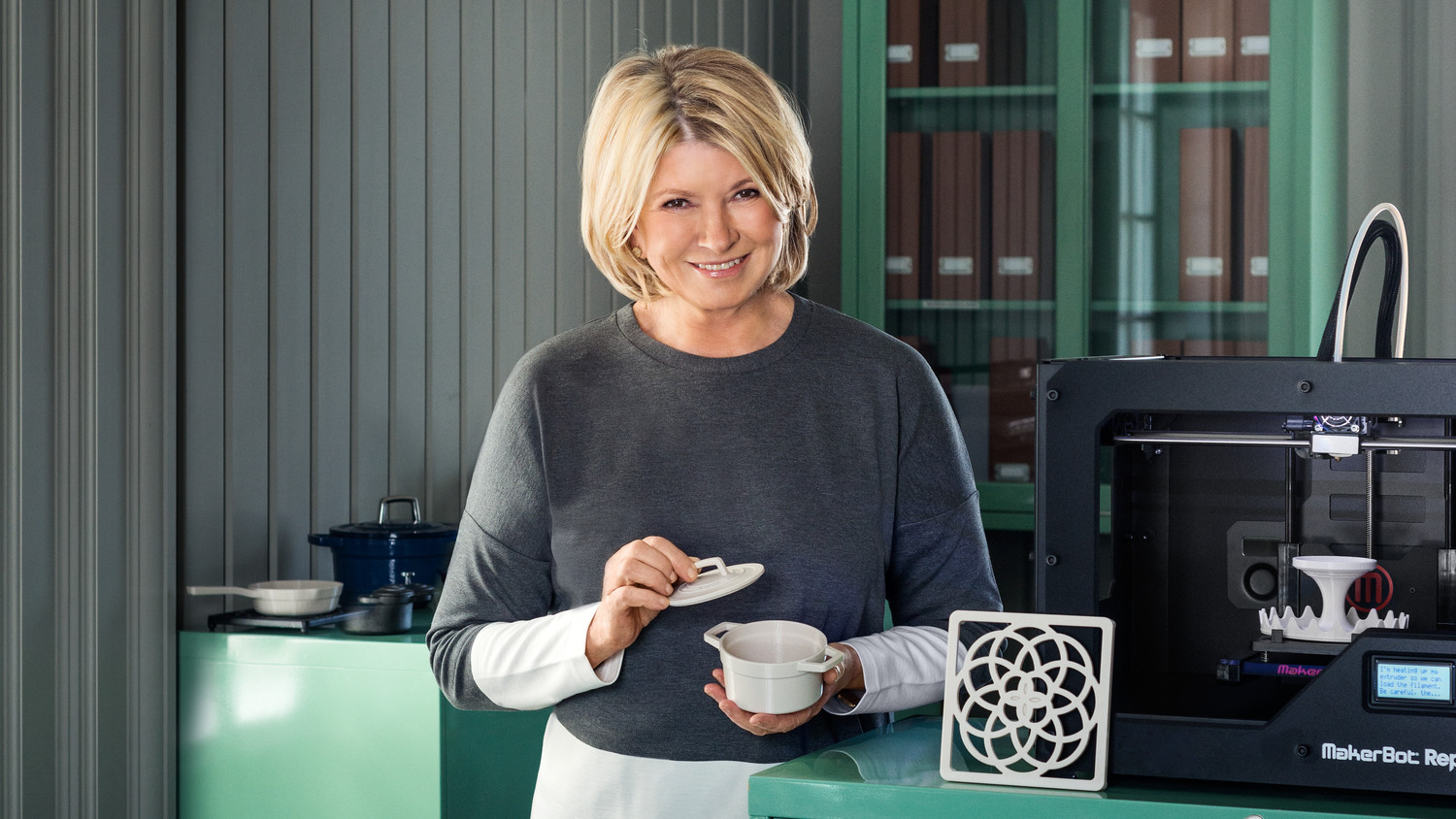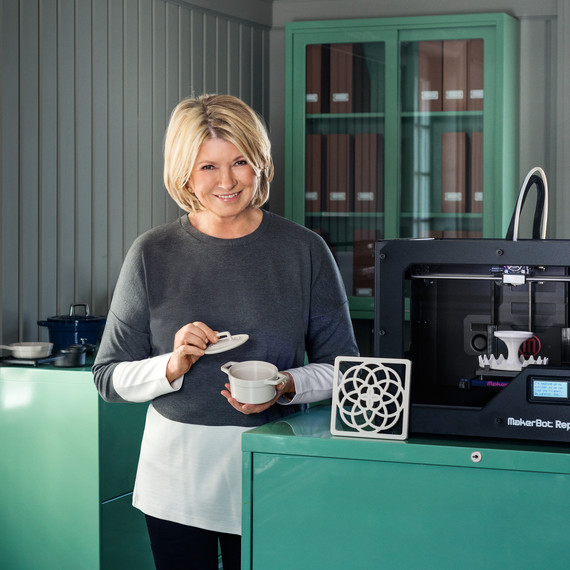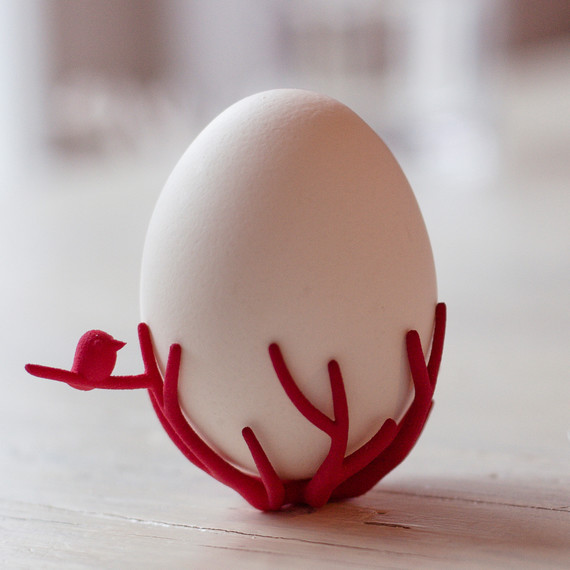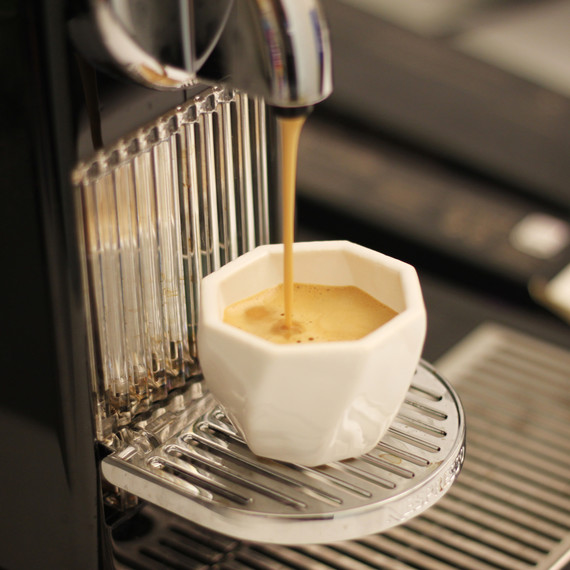

Martha is an avid follower of new technologies — including the buzzworthy 3-D printer. Although 3-D printing has been used commercially since the mid-1980s, desktop models made for home users have only recently hit the market. A drastic drop in prices over the past couple of years (some models now cost less than $500) means that more and more people can afford to take this technology home. Even if you’re not planning to buy your own printer, you can still get in on the fun by designing and purchasing 3-D-printed home goods, jewelry, gadgets, and more.
Read on for the basics that you need to know.
What is 3-D printing?
Today’s 3-D printers build three-dimensional objects following a digital blueprint. Unlike other manufacturing devices, which cut away from a solid piece of material to sculpt an object, modern 3-D printers use an additive process: Many extrude melted materials (like plastic, metal, clay, and even chocolate) out of a tube in thin layers. Layer upon layer is built up to make the finished product.

What can a 3-D printer be used for?
So far, most 3-D printers for home users print with plastic filaments, so you can make picture frames, planters, cookie cutters, coffee mugs, kitchen tools (like this bird’s nest egg cup), and more. Industrial versions can print items on a much larger scale in a wider variety of materials, including metal, ceramic, and chocolate. These machines have built home accessories, musical instruments, chocolate bars, bikes, and much more. At Martha Stewart Living Omnimedia, we anticipate using these printers as design tools. For example, we can make very detailed prototypes for our housewares line at Macy’s.
Designer Francis Bitonti tests the limits of a home 3-D printer by teaching a workshop during which students design and print an entire dress. His class’s latest couture creation, the Bristle dress, was printed on a MakerBot using flexible plastic filament. The design for the dress is available for free at Thingiverse, MakerBot’s online sharing community and home to more than 200,000 free designs.
Robohand, another company that uses home printers, designs and prints custom-fitted alternatives to standard prosthetic limbs. After a woodworking accident left Richard van As without fingers on his right hand, he launched Robohand. He collaborated with mechanical special-effects designer Ivan Owen to build designs for mechanical fingers and hands. The resulting designs are now free on Thingiverse and can be altered for a custom fit. “You can make your own prosthetic hand for just the cost of supplies,” says MakerBot’s Jenifer Howard. “This technology is changing people’s lives.”
How long does it take to print an item?
Print time depends on the size and complexity of the item printed, as well as the speed of the printer. A simple plastic bracelet is ready in 16 minutes on a MakerBot, but a turbine-engine model takes almost 24 hours.
What software do I need to create my designs?
To make your own designs, you’ll need some type of CAD (computer-aided design) software. There are lots of free, easy-to-use options available for download on your desktop, tablet, or smartphone, including Google SketchUp, Autodesk 123D Design, and Tinkercad. After designing, you’ll need to use software that converts the 3-D model file (like STL) into 2-D slices — when printed, these digital cross-sections will become the thin layers of your object.
I don’t plan to buy a 3-D printer; how can I still try this technology?
There are a few companies that will print your designs for you, like Shapeways, Ponoko, and i.materialise. Just visit one of these websites, upload your design, and choose from a variety of materials. Some companies, like Shapeways, check that your 3-D model is structurally sound before printing it. “At least 10 people will be involved in the process of bringing your ideas to life,” says Carine Carmy, director of marketing at Shapeways. You can also get in on the fun by shopping for 3-D-printed products. Many of these sites have a gallery of 3-D-printed items that can be purchased, and Etsy offers even more options.

Shapeways’ Creator apps allow you to make customized items. This espresso cup, made with the Creator tool, was printed in food-safe ceramic.